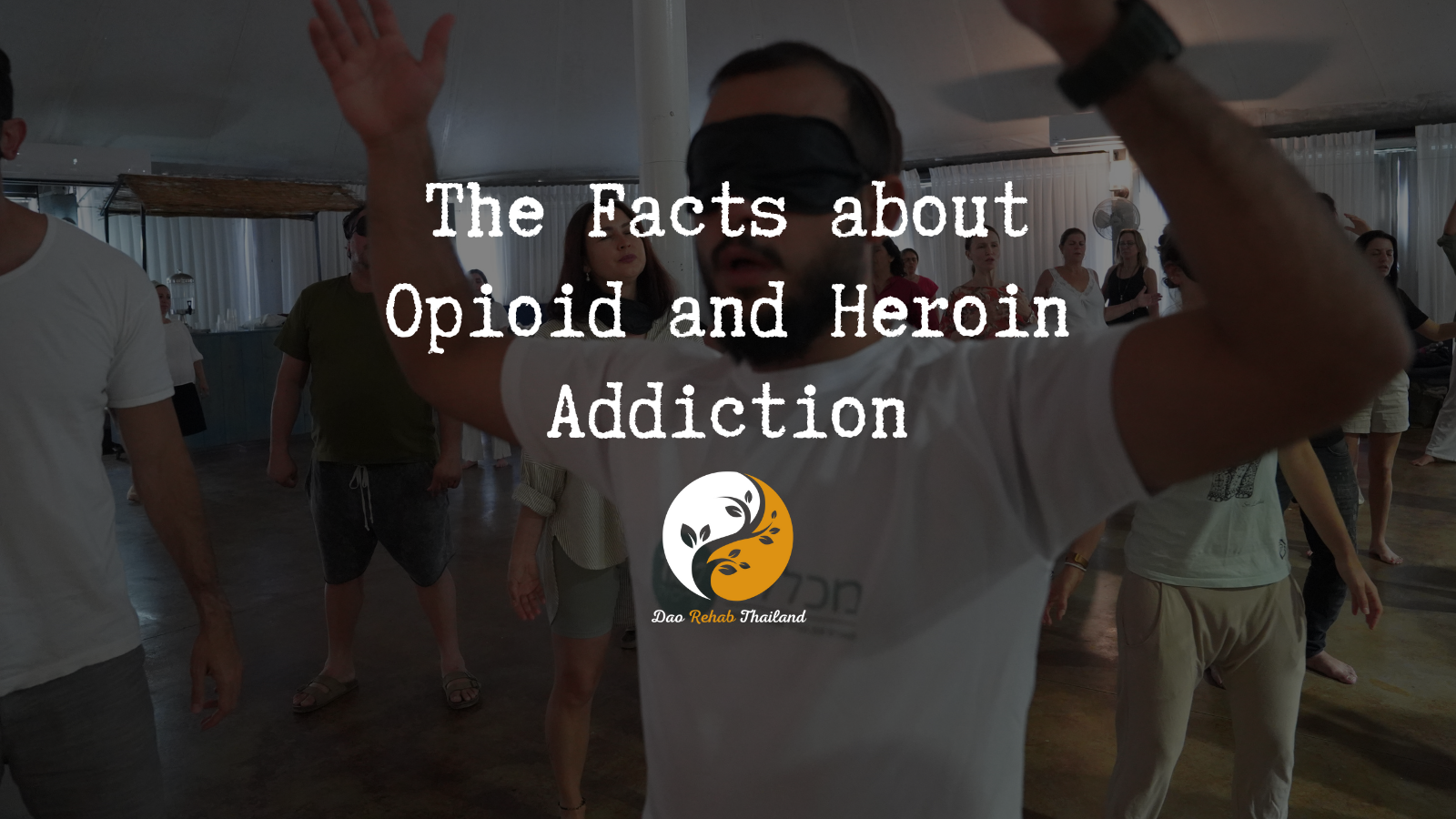
The Facts about Opioid and Heroin Addiction
The Facts about Opioid and Heroin Addiction
“Turning the impossible into possible”

"Detox from heroin at a Luxury Holistic Center in Thailand and Israel"

The Facts about Opioid and Heroin Addiction
Opioid and heroin addiction are major public health concerns due to the highly addictive nature of these substances and their potentially life-threatening effects. Here’s an overview of key facts about opioid and heroin addiction, from their effects on the brain to the challenges in treating addiction:
"Holistic Center for Trauma, Addiction, and Mental Imbalance Treatment in Thailand"
“Come to the beginning of your journey to freedom from addiction to alcohol, drugs, and pills, and rediscover your life within the serene embrace of DaoTherapy Rehab in Thailand—where holistic healing meets empowering recovery.”
DaoTherapy Holistic Rehab
Key Elements of heroin Detox:
Medical Supervision: heroin detox must be conducted under medical supervision, as the body may experience withdrawal symptoms. These can include nausea, anxiety, muscle aches, and insomnia. A medical team will monitor and manage these symptoms to ensure the patient’s safety and comfort.
Holistic Therapies:
Holistic Therapies: Many detox programs incorporate holistic therapies such as mindfulness, yoga, and meditation to help individuals cope with stress and anxiety during the detox process. These therapies support the mind-body connection and contribute to overall recovery.
Tapering Process
Tapering Process: heroin detox often involves a gradual tapering of the drug to reduce withdrawal severity. Doctors will slowly decrease the dosage over time to allow the body to adjust to lower levels of the substance.
Psychological Support:
Psychological Support: Like any addiction recovery process, detox from heroin includes psychological support. This can involve counseling, therapy, or support groups to address the mental and emotional aspects of addiction.
Post-Detox Treatment:
Post-Detox Treatment: After completing detox, continuing treatment is crucial to prevent relapse. This often includes participation in ongoing therapy, group support, and the development of new coping strategies to maintain sobriety.
What Are Opioids?
Opioid and heroin addiction are major public health concerns due to the highly addictive nature of these substances and their potentially life-threatening effects. Here’s an overview of key facts about opioid and heroin addiction, from their effects on the brain to the challenges in treating addiction:
1. What Are Opioids?
– Definition: Opioids are a class of drugs that include prescription pain relievers like oxycodone, hydrocodone, morphine, codeine, and synthetic opioids like fentanyl, as well as the illegal drug heroin.
– Medical Use: Opioids are commonly prescribed for pain management, especially after surgeries or for chronic pain conditions. However, they carry a high risk of misuse and addiction.
2. How Opioids and Heroin Affect the Brain
– Binding to Opioid Receptors: Opioids bind to opioid receptors in the brain and spinal cord, blocking pain signals and releasing large amounts of dopamine, which leads to intense feelings of pleasure and relaxation.
– Reinforcement of Use: The dopamine release reinforces drug-taking behavior, leading users to seek the drug repeatedly to experience the same feelings, thus developing a pattern of addiction.
– Tolerance and Dependence: With continued use, the brain adjusts to the presence of the drug, leading to tolerance (needing more to feel the same effect) and physical dependence (experiencing withdrawal symptoms without it).
3. Signs and Symptoms of Opioid and Heroin Addiction
– Physical Signs: Drowsiness, slowed breathing, constricted pupils, nausea, and constipation.
– Behavioral Changes: Neglecting responsibilities, social withdrawal, doctor shopping (visiting multiple doctors to obtain prescriptions), and risky behavior.
– Psychological Symptoms: Depression, anxiety, mood swings, and a strong preoccupation with obtaining and using the drug.
4. Risks and Complications of Opioid and Heroin Use
– Risk of Overdose: Opioids depress respiratory function, and high doses can cause breathing to stop altogether. This is particularly dangerous with potent synthetic opioids like fentanyl, which can be deadly in small amounts.
– Increased Risk with Injection: Injecting heroin or other opioids raises the risk of infectious diseases such as HIV and hepatitis C due to needle sharing.
– Long-Term Health Effects: Chronic use can lead to collapsed veins, abscesses, liver and kidney disease, and a weakened immune system.
5. Opioid Addiction vs. Heroin Addiction
– Prescription Opioids: Often start as legitimate pain management tools but can lead to misuse if tolerance builds or if used for non-medical reasons. Users may turn to heroin if they lose access to prescriptions or seek a cheaper, stronger alternative.
– Heroin: A highly addictive illegal opioid derived from morphine, often cheaper and more accessible than prescription opioids, contributing to its widespread use among those struggling with opioid addiction.
6. Withdrawal Symptoms
– Physical Symptoms: Nausea, vomiting, muscle aches, sweating, chills, and restlessness. These symptoms often resemble severe flu and can be intense, especially in the first few days.
– Psychological Symptoms: Anxiety, irritability, depression, and intense cravings, which can last weeks to months.
7. Treatment Options for Opioid and Heroin Addiction
– Medications for Treatment: Medications like methadone, buprenorphine, and naltrexone are used to manage withdrawal symptoms, reduce cravings, and prevent relapse. These are often part of a Medication-Assisted Treatment (MAT) plan.
– Therapy and Counseling: Behavioral therapies, including cognitive-behavioral therapy (CBT) and contingency management, are effective in helping individuals understand the causes of their addiction and develop coping strategies.
– Detox and Inpatient Programs: For some, detox programs and inpatient rehabilitation offer an intensive, structured environment to manage withdrawal and begin recovery.
8. The Role of Relapse Prevention and Long-Term Support
– Continued Care: Addiction is a chronic disease, and ongoing care—through outpatient programs, therapy, and support groups—is often essential for maintaining sobriety.
– Support Groups: Groups like Narcotics Anonymous (NA) or community-based recovery groups provide peer support, accountability, and encouragement for those recovering from opioid and heroin addiction.
9. Public Health Impact
– Opioid Epidemic: The opioid crisis has led to a dramatic increase in overdose deaths and significant strain on public health systems. The crisis has prompted changes in prescribing practices and increased focus on harm reduction and addiction treatment services.
– Increased Awareness and Resources: Efforts are ongoing to provide resources, education, and support to those affected by opioid addiction, including expanding access to naloxone (an opioid overdose reversal drug) and implementing safe prescribing guidelines.
Opioid and heroin addiction are complex conditions that impact the brain and body, leading to both physical dependence and psychological cravings. Treatment typically requires a combination of medication, therapy, and ongoing support to address the physical and psychological aspects of addiction and prevent relapse. Public health efforts focus on harm reduction, prevention, and accessible treatment options to combat the opioid crisis and help individuals rebuild their lives.

contact us
Contact us with your questions
We would love to speak with you! Feel free to reach out with any questions.

get in touch
Schedule a free consultation
Schedule a free consultation with our team and let’s make things happen!
What Are Opioids?
Opioids are a class of drugs that are used primarily for pain relief but can be highly addictive. They include both naturally derived substances from the opium poppy plant and synthetic versions created in laboratories. Here’s a breakdown of what opioids are and their uses, risks, and types:
“Opioid” is an umbrella term for both natural and synthetic painkiller drugs derived from or based on the poppy plant. The related term opiate is used to define the drugs that use only natural opium poppy products. For example, the illicit drug, heroin, is classified as an opiate because it is derived from the poppy plant. Whereas “opioid” prescription medications are designated as such because they include other synthetic compounds in their mixtures. Both opiates and opioids present great risks for opioid dependence, addiction, overdose and even death.
Physicians often prescribe opioid medications to relieve acute pain—from injuries, surgeries, toothaches, or other medical and dental procedures—or to alleviate chronic pain. However, studies show that long-term opioid use for chronic pain can be ineffective and comes with the risk of addiction. You might recognize some of the more well-known opioid drugs prescribed for pain, including:
Morphine
Codeine
Diacetylmorphine
Hydromorphone (Dilaudid)
Hydrocodone (Vicodin, Lortab)
Isotonitazene
Opium
Oxycodone (OxyContin, Percocet)
Oxymorphone
Meperidine (Demerol)
Methadone
Fentanyl (Sublimaze, Actiq)
Tramadol
What Are the Differences in These Various Opioids?
Opioids vary widely in their strength, duration of action, and specific medical uses, as well as in their potential for addiction and side effects. Here’s an overview of the key differences among various opioids:
1. Source and Composition
– Natural Opiates: Directly derived from the opium poppy plant. Examples include **morphine**, **codeine**, and **opium**. These drugs are the basis for many other semi-synthetic opioids.
– Semi-Synthetic Opioids: Chemically modified natural opiates, including **hydrocodone** (Vicodin), **oxycodone** (OxyContin), and heroin (diacetylmorphine). These are generally more potent and faster-acting than natural opiates.
– Synthetic Opioids: Fully lab-made opioids like **fentanyl**, **methadone**, and **tramadol**. Synthetic opioids are often extremely potent and carry higher risks of overdose, especially fentanyl.
2. Potency
– Low Potency: “Codeine” and “tramadol” are less potent and are often prescribed for mild to moderate pain. Tramadol, for instance, has additional antidepressant-like effects due to its serotonin-norepinephrine reuptake inhibition (SNRI) properties.
– Moderate Potency: “Hydrocodone” and “oxycodone” are stronger than codeine and used for moderate to severe pain. They are common in both short-acting (Percocet, Vicodin) and extended-release forms (OxyContin).
– High Potency: “Fentanyl” and “hydromorphone” are among the strongest opioids available. Fentanyl is about 50-100 times more potent than morphine and is typically used for severe pain or in anesthesia.
3. Duration of Action
– Short-Acting Opioids: Drugs like “morphine”, “hydrocodone”, and “immediate-release oxycodone” typically provide relief for 4-6 hours, requiring multiple doses for ongoing pain.
– Long-Acting/Extended-Release Opioids: “OxyContin” (extended-release oxycodone), “methadone”, and “fentanyl patches” provide longer pain relief (up to 12-72 hours, depending on the formulation). They are often prescribed for chronic pain management to avoid frequent dosing.
4. Specific Medical Uses
– Chronic Pain Management: Long-acting opioids like **methadone** and **fentanyl patches** are often used for chronic pain management because they provide steady, long-lasting relief.
– Acute Pain: Short-acting opioids like “hydrocodone” and “oxycodone” (in formulations like Percocet) are commonly prescribed for acute, post-surgical, or injury-related pain.
– “Opioid Dependence Treatment”: “Methadone” and “buprenorphine” are often used in medication-assisted treatment (MAT) programs to help individuals manage opioid dependence due to their ability to reduce cravings without producing intense euphoria.
5. Addiction Potential
– High Risk: Opioids like “heroin”, “fentanyl”, and “oxycodone” are highly addictive and frequently misused. Heroin and fentanyl carry particularly high risks due to rapid onset and powerful effects.
– Moderate Risk: “Hydrocodone” and “morphine” also have a significant addiction risk, though they are less potent than drugs like fentanyl.
– Lower Risk: “Tramadol” and “codeine” are generally less addictive, though still carry dependency risks when misused.
6. Side Effects and Health Risks
– Respiratory Depression: High-potency opioids, particularly **fentanyl**, carry a high risk of respiratory depression, especially if taken in excess or combined with other depressants like alcohol.
– Liver Damage: Opioids combined with “acetaminophen” (e.g., **Percocet** and **Vicodin**) carry the risk of liver damage due to the acetaminophen component.
– Serotonin Syndrome Risk: “Tramadol” has a unique risk of serotonin syndrome due to its SNRI action, especially when combined with other serotonergic drugs.
Summary
The differences among opioids largely depend on their potency, duration of action, specific medical uses, and risks of addiction and overdose. Short-acting opioids are typically used for acute pain, while long-acting opioids help manage chronic pain. Stronger opioids like fentanyl have greater addiction and overdose risks, making them suitable only for carefully monitored, severe pain situations.
What's the Connection between Prescription Painkillers and Heroin?
The connection between prescription painkillers and heroin is a complex one that has significantly impacted the opioid crisis. Many people who become addicted to prescription opioids, such as oxycodone, hydrocodone, and morphine, eventually transition to heroin due to factors like availability, cost, and tolerance. Here’s how the connection works:
1. Prescription Painkillers and Opioid Dependency
– Initial Prescription Use: Many individuals start using prescription opioids after they’re prescribed for pain management, such as after surgery or for chronic pain conditions.
– Tolerance and Dependence: With regular use, users can develop a tolerance, meaning they need higher doses to achieve the same pain-relieving effect. Dependence can also develop, leading to withdrawal symptoms if the drug is stopped.
– Addiction Development: Some individuals may begin to misuse their medication by taking it more frequently or in higher doses than prescribed to maintain its effects, leading to addiction.
2. Transition from Prescription Opioids to Heroin
– Prescription Limits and Cost: As addiction progresses, obtaining prescription opioids legally becomes more challenging due to increased regulation, prescription monitoring, and expense. A black-market supply of these medications is often prohibitively expensive.
– Availability of Heroin: Heroin is often cheaper and more accessible than prescription opioids on the street, providing a similar effect at a lower cost. Users may turn to heroin as a substitute when they can no longer afford or access prescription opioids.
– Increased Potency: Heroin provides a stronger and faster-acting high than many prescription opioids, which can appeal to individuals who have developed a high tolerance to prescription medications.
3. The Role of Fentanyl in Heroin Use
– Heroin Adulteration: Heroin is often mixed with synthetic opioids like fentanyl, a powerful opioid that is 50-100 times stronger than morphine. This increases the potency—and danger—of heroin sold on the street.
– Overdose Risk: Many individuals may unknowingly consume heroin laced with fentanyl, significantly increasing the risk of overdose, as fentanyl can cause respiratory failure with even a small dose.
4. Prescription Opioids as a Gateway to Heroin
– Statistics: Studies have shown that a significant percentage of people who use heroin started with prescription painkillers. The National Institute on Drug Abuse (NIDA) estimates that nearly 80% of people who use heroin began with a prescription opioid.
– Social and Psychological Factors: Addiction often leads to social isolation, stigma, and psychological challenges, making individuals more likely to seek heroin as a more potent, accessible alternative.
5. Efforts to Address the Connection
– Prescription Regulation: Medical guidelines now recommend prescribing opioids only when necessary, with lower doses and shorter durations. Prescription monitoring programs have been implemented to reduce misuse.
– Access to Treatment: Medication-assisted treatment (MAT) using methadone, buprenorphine, or naltrexone is available to help individuals with opioid addiction manage withdrawal and reduce cravings, preventing the transition to illicit drugs like heroin.
– Naloxone Availability: Naloxone, an overdose-reversal drug, has become widely available to counteract the effects of an opioid overdose, potentially saving lives during a heroin or fentanyl overdose.
Summary
The transition from prescription painkillers to heroin often happens due to the addictive nature of opioids, increased tolerance, and the high cost of black-market prescription drugs. Heroin becomes a more affordable and accessible alternative, though it carries heightened risks, especially when mixed with fentanyl. Efforts to reduce this pathway include tighter prescription regulations, increased access to addiction treatment, and greater availability of overdose-reversal medications.
Psychological Support:
Psychological Support: Like any addiction recovery process, detox from Subutex includes psychological support. This can involve counseling, therapy, or support groups to address the mental and emotional aspects of addiction.
How Do Opioids Work and Why Are They So Addictive?
Opioids are incredibly effective pain relievers, but they also have a high potential for addiction due to the way they interact with the brain. Here’s a look at how opioids work and why they’re so addictive:
1. Mechanism of Action: How Opioids Relieve Pain
– Binding to Opioid Receptors: Opioids attach to specific receptors in the brain, spinal cord, and other parts of the body known as mu, delta, and kappa opioid receptors. These receptors play a major role in how the body perceives and responds to pain.
– Blocking Pain Signals: By binding to opioid receptors, opioids block the transmission of pain signals to the brain, leading to pain relief and, often, a feeling of calm or relaxation.
2. Euphoria and Dopamine Release
– Dopamine Boost: When opioids bind to receptors, they trigger the release of large amounts of dopamine, a neurotransmitter linked to pleasure, reward, and reinforcement.
– Euphoric High: This dopamine release produces intense feelings of pleasure, or a “high,” which reinforces the desire to use the drug repeatedly. This euphoric effect is one of the primary reasons people become addicted to opioids.
– Reward Pathway Activation: Dopamine release activates the brain’s reward system, teaching the brain to associate opioid use with pleasure and well-being. This creates a powerful drive to continue taking the drug to experience these feelings.
3. Tolerance Development
– Needing More for the Same Effect: Over time, the brain adjusts to the constant presence of opioids and becomes less sensitive to their effects. This is known as “tolerance”, meaning that people need higher doses to achieve the same level of pain relief or euphoria.
– Escalation of Use: As tolerance builds, individuals often take larger or more frequent doses, increasing the risk of addiction, overdose, and severe side effects.
4. Dependence and Withdrawal
– Physical Dependence: With continued opioid use, the brain becomes dependent on the drug to maintain normal function. When the drug is stopped, the brain reacts negatively, leading to physical withdrawal symptoms.
– Withdrawal Symptoms: Withdrawal from opioids can cause intense discomfort, including muscle aches, nausea, vomiting, anxiety, and irritability. These symptoms make it difficult to stop using opioids, as people often take the drug again to avoid withdrawal.
5. Psychological Addiction
– Compulsive Drug-Seeking Behavior: Beyond physical dependence, opioids also cause psychological addiction, where individuals feel compelled to use the drug despite negative consequences. The dopamine-driven reward system reinforces opioid use, leading to compulsive drug-seeking behavior.
– Impact on Decision-Making: Addiction affects the brain’s prefrontal cortex, which is responsible for decision-making, impulse control, and self-regulation. Over time, this can make it nearly impossible for individuals to stop using opioids without help.
6. Potency and Fast-Acting Nature
– High Potency of Certain Opioids: Some opioids, like fentanyl, are extremely potent and work rapidly, creating a powerful and immediate effect. These fast-acting opioids increase the risk of addiction, as the brain quickly learns to associate use with pleasure.
– Short Duration of Effect: Many opioids have a relatively short duration of action, causing the pleasurable effects to wear off quickly. This can lead to frequent use to maintain the high, escalating the addiction cycle.
7. Environmental and Genetic Factors
– Genetic Predisposition: Some people have a genetic predisposition to addiction, making them more vulnerable to opioid dependency.
– Environmental Triggers: Stress, trauma, social factors, and accessibility can also play a significant role in the risk of addiction, making some individuals more likely to misuse opioids.
Summary
Opioids are addictive due to their powerful effects on the brain’s reward system, where they relieve pain, produce euphoria, and cause the release of dopamine. This reinforces drug use, leading to tolerance, dependence, and addiction. Repeated opioid use fundamentally alters brain function, making it difficult to quit without experiencing intense cravings and withdrawal symptoms.
What Are the Signs, Symptoms and Side Effects of Opioid Addiction?
Every person’s situation is different, but in general, opioid use disorder is a condition that involves both physical and psychological processes. Addiction and dependence can happen in small increments, and a person might not recognize the signs of addiction until a crisis occurs.
Here are eight potential warning signs of opioid or heroin abuse:
Taking the drug in larger amounts or over a longer period than intended or prescribed
A persistent desire or unsuccessful efforts to cut down or control drug use
An excessive amount of time and effort spent getting, using and recovering from the effects of use
Intense cravings or a strong desire or urge to use
Failure to fulfill obligations at work, school or home due to drug abuse
Continued use despite persistent or recurrent social or personal problems caused by usage
Continued use despite situations that could be physically hazardous, including overdose risk
Continued use despite awareness of potential physical or mental health problems
As with all types of drug or alcohol addiction, having a family history of substance abuse increases the risk of developing dependence.
Other signs, symptoms and side effects of prescription opioid abuse or heroin use include:
Problematic mental health, behavioral or psychological changes such as agitation, poor judgement or apathy
Drowsiness or coma
Impaired mental functioning
Slurred speech
Constricted pupils
Euphoria
Slowed-down respiration
Dry mouth
Nausea
Constipation
Abdominal cramping
Skin rashes and infections
Weight gain
Menstrual problems
Depression
Headaches
Bad dreams
Loss of libido, sexual dysfunction
Mood swings
Collapsed veins
Risk of HIV, hepatitis B or C
Miscarriage
Infections of the heart lining and valves
Psychological Support:
Psychological Support: Like any addiction recovery process, detox from Subutex includes psychological support. This can involve counseling, therapy, or support groups to address the mental and emotional aspects of addiction.
What Are the Symptoms or Warning Signs of a Heroin/Opioid Overdose?
Taking a large, single dose of heroin or any opioid drug can cause severe respiratory depression (where breathing slows or even stops) with the potential for accidental drug overdose and death. Opioid abuse is also associated with a higher risk of suicide.
Symptoms of an overdose may include:
Shallow breathing
Pinpoint pupils
Convulsions
Coma
Nervous system changes
Decreased vital signs
Cold or clammy skin, or bluish lips
The strength of heroin is unpredictable because other drugs, such as fentanyl, are sometimes added to increase volume or enhance potency. Heroin is one of the substances most frequently reported by medical examiners in drug abuse deaths.
Psychological Support:
Psychological Support: Like any addiction recovery process, detox from Subutex includes psychological support. This can involve counseling, therapy, or support groups to address the mental and emotional aspects of addiction.
What Is Opioid Withdrawal? What Are the Symptoms?
Opioid withdrawal occurs when someone who has developed a dependence on opioids suddenly reduces or stops their use. Dependence can develop after repeated opioid use, and the body adapts to the drug, leading to withdrawal symptoms when it’s removed. Opioid withdrawal is often highly uncomfortable, though not typically life-threatening, and can be a significant barrier to quitting opioids due to the intensity of the symptoms.
Symptoms of Opioid Withdrawal
Opioid withdrawal symptoms can vary in intensity and duration depending on the type of opioid used, duration of use, dosage, and individual physiology. Symptoms generally begin within hours to a day after the last dose and typically peak within a few days.
Early Symptoms (Within 6–12 hours for short-acting opioids and 30 hours for longer-acting opioids)
– Anxiety and Agitation: Feelings of restlessness and nervousness.
– Muscle Aches: Generalized body aches and muscle pain.
– Sweating: Profuse sweating, often accompanied by chills.
– Runny Nose and Watery Eyes: Similar to flu-like symptoms.
– Insomnia: Difficulty falling asleep or staying asleep.
– Yawning: Excessive yawning is a common symptom.
Peak Symptoms (24–72 hours after last dose)
– Intense Cravings: A powerful urge to use opioids, making it challenging to resist relapse.
– Nausea and Vomiting: Persistent nausea and episodes of vomiting.
– Diarrhea: Alongside vomiting, this can lead to dehydration.
– Abdominal Cramps: Painful cramping in the abdomen.
– Dilated Pupils: Pupil dilation is common in withdrawal.
– Goosebumps: This gives the “cold turkey” feeling of chills and goosebumps.
– Increased Heart Rate and Blood Pressure: Heightened cardiovascular responses, which may include sweating and agitation.
– Muscle Spasms or Twitches: Restless legs or muscle jerking.
Duration of Withdrawal Symptoms
– Acute Withdrawal: Symptoms generally peak around 72 hours and begin to subside within a week. However, some symptoms like cravings and mood changes may persist longer.
– Post-Acute Withdrawal Syndrome (PAWS): Some people experience prolonged withdrawal symptoms that can last for weeks or months, including mood swings, anxiety, sleep disturbances, and cravings.
Managing Opioid Withdrawal
Opioid withdrawal is challenging, and professional support is often recommended. Medical detox may involve medications like methadone or buprenorphine to ease symptoms, reduce cravings, and provide a safer, more gradual taper off opioids. Other therapies include clonidine, anti-nausea medication, and pain relievers to help manage specific symptoms.
Psychological Support:
Psychological Support: Like any addiction recovery process, detox from Subutex includes psychological support. This can involve counseling, therapy, or support groups to address the mental and emotional aspects of addiction.
What Is the Most-Effective Treatment for Opioid Addiction?
The most effective treatments for opioid addiction typically involve a combination of medication-assisted treatment (MAT), behavioral therapies, counseling, and supportive care. Here’s a breakdown of the most widely recognized and effective approaches:
1. Medication-Assisted Treatment (MAT)
MAT is considered one of the most effective approaches for treating opioid addiction. This approach uses FDA-approved medications to ease withdrawal symptoms, reduce cravings, and restore balance to the brain’s chemistry. The most common medications used in MAT include:
2. Behavioral Therapies
Behavioral therapies work alongside MAT to address the psychological and behavioral aspects of addiction. Commonly used therapies include:
– Cognitive-Behavioral Therapy (CBT): Helps individuals recognize and change negative thought patterns and behaviors related to drug use, develop coping strategies, and improve problem-solving skills.
– Contingency Management: Provides rewards or incentives for achieving treatment goals, such as remaining drug-free, to reinforce positive behaviors.
– Motivational Interviewing: Helps individuals build motivation for change by exploring and resolving ambivalence about quitting drug use.
3. Counseling and Support Groups
– Individual Counseling: Offers one-on-one support to explore personal issues, trauma, and other factors contributing to addiction, and develop personalized coping strategies.
– Group Therapy: Provides a supportive environment where individuals can share their experiences, learn from others, and build social connections with people who understand their challenges.
– 12-Step Programs (e.g., Narcotics Anonymous): These support groups provide a structured program for ongoing recovery, helping individuals find a community of support and accountability.
4. Integrated Care and Holistic Approaches
– Co-Occurring Disorder Treatment: Integrated treatment for both addiction and any underlying mental health issues (such as depression or anxiety) is crucial for effective recovery.
– Holistic Therapies: Techniques like yoga, meditation, mindfulness, and acupuncture may reduce stress and improve mental and physical well-being, supporting recovery.
– Nutritional and Physical Health Support: Healthy eating, exercise, and sleep are essential for recovery, as they help improve mood, energy, and physical resilience.
5. Long-Term Aftercare and Relapse Prevention
– Aftercare Planning: Creating a comprehensive plan for post-treatment life is essential to prevent relapse. This may include ongoing counseling, support groups, and lifestyle adjustments.
– Relapse Prevention Programs: These programs teach individuals how to identify and manage triggers and stressors to prevent relapse and maintain sobriety.
Why This Combination Works
A multifaceted approach addresses the physical, psychological, and social aspects of opioid addiction, which improves outcomes by treating the whole person rather than focusing solely on stopping drug use. MAT helps stabilize brain function, while behavioral therapies and support networks address the underlying causes of addiction and promote lasting behavioral change.
Each person’s needs may vary, so an individualized treatment plan that includes a mix of these methods is often the most effective way to achieve long-term recovery.
Psychological Support:
Psychological Support: Like any addiction recovery process, detox from Subutex includes psychological support. This can involve counseling, therapy, or support groups to address the mental and emotional aspects of addiction.








